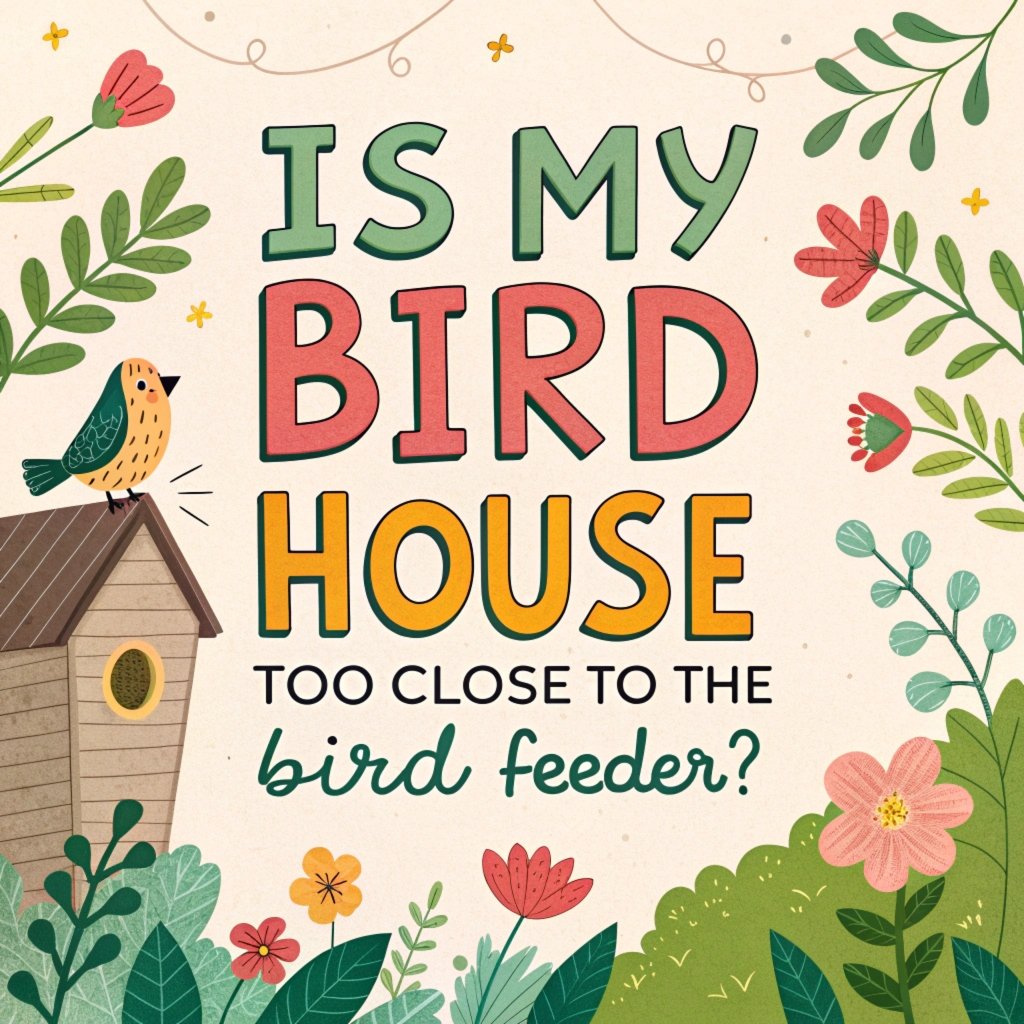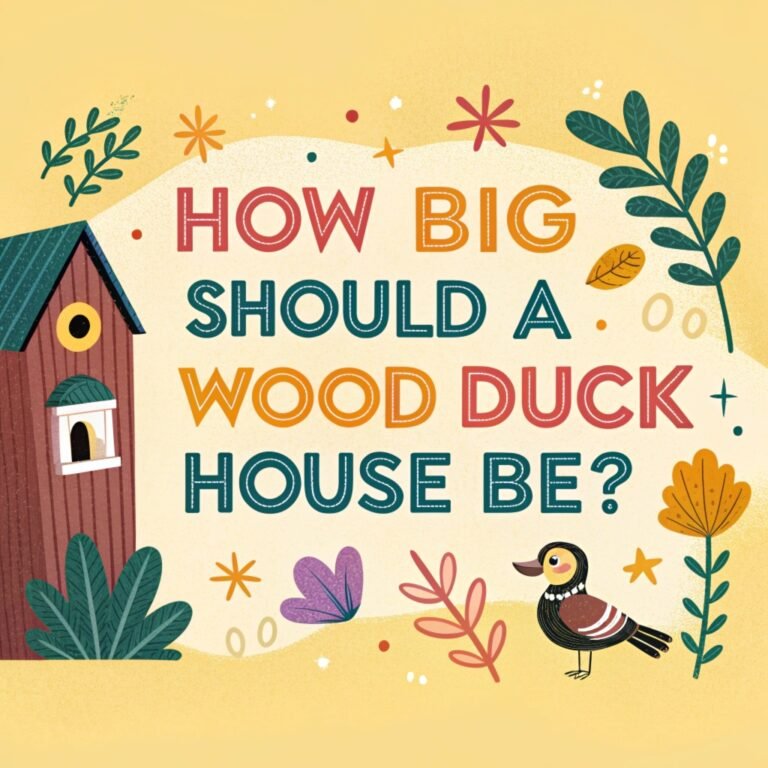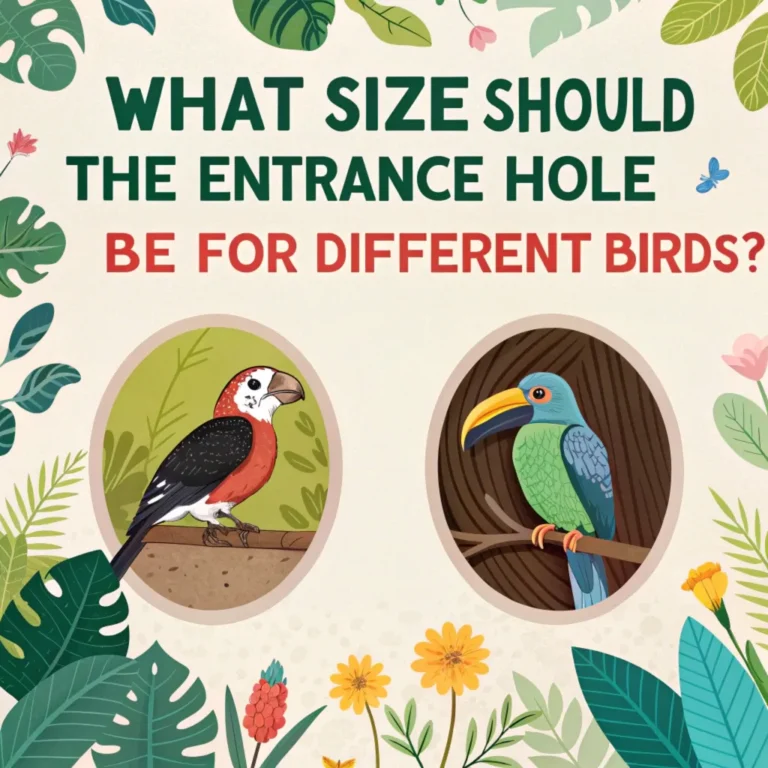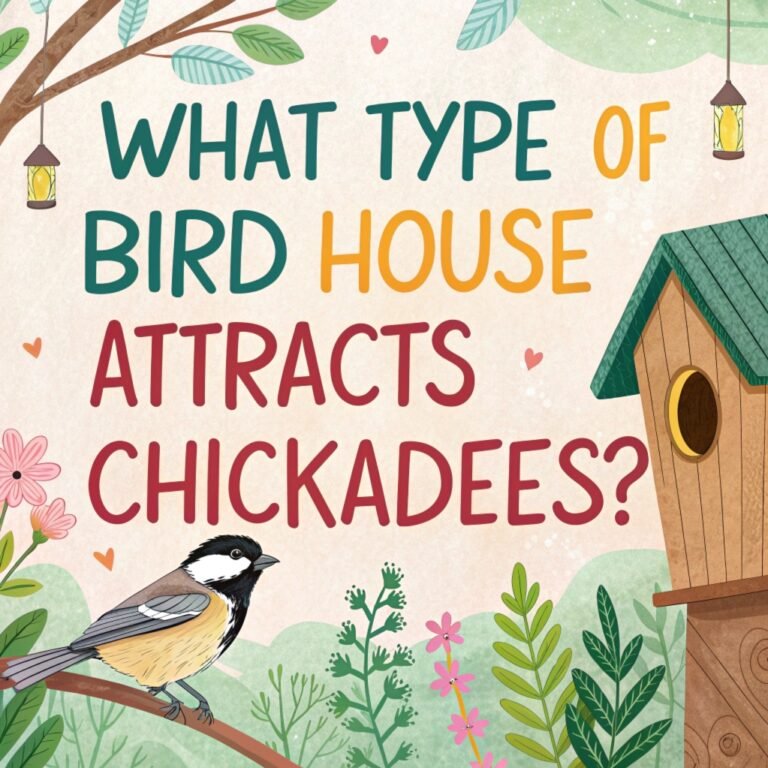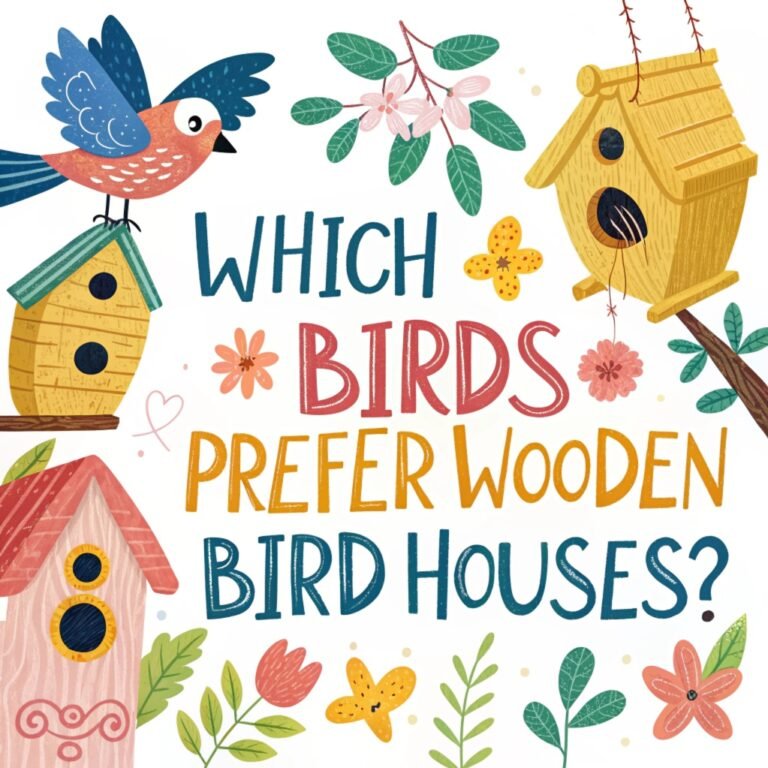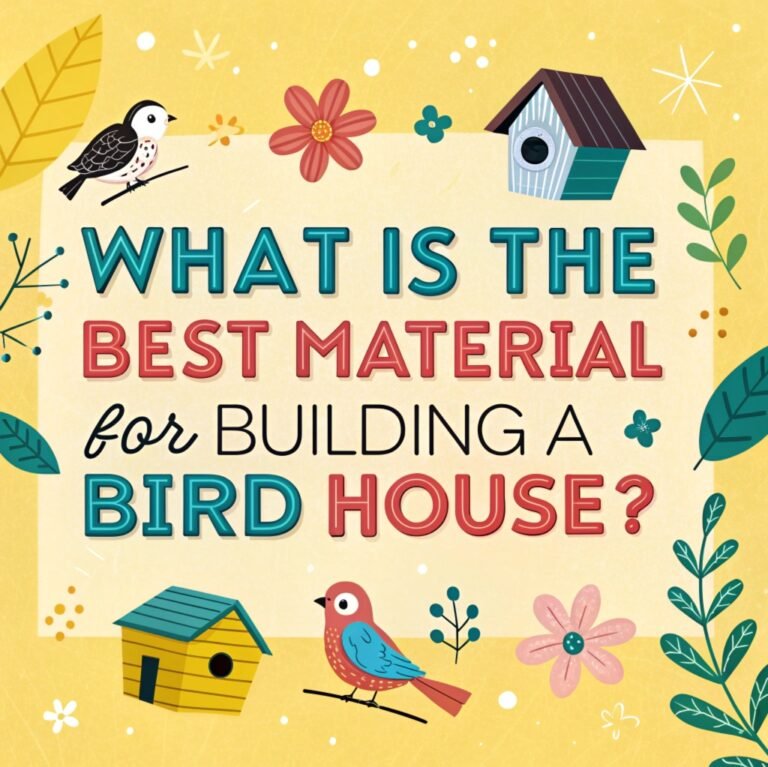Is My Bird House Too Close to the Bird Feeder? A Comprehensive Guide to Optimal Placement for Avian Harmony
Creating a welcoming environment for birds in your yard involves more than just setting up a birdhouse and a feeder.
The placement of these elements can significantly impact the success of your bird-friendly space.
In this comprehensive guide, we’ll explore the ideal distances between birdhouses and feeders, the potential problems of close placement, and strategies for creating an optimal layout in your yard.
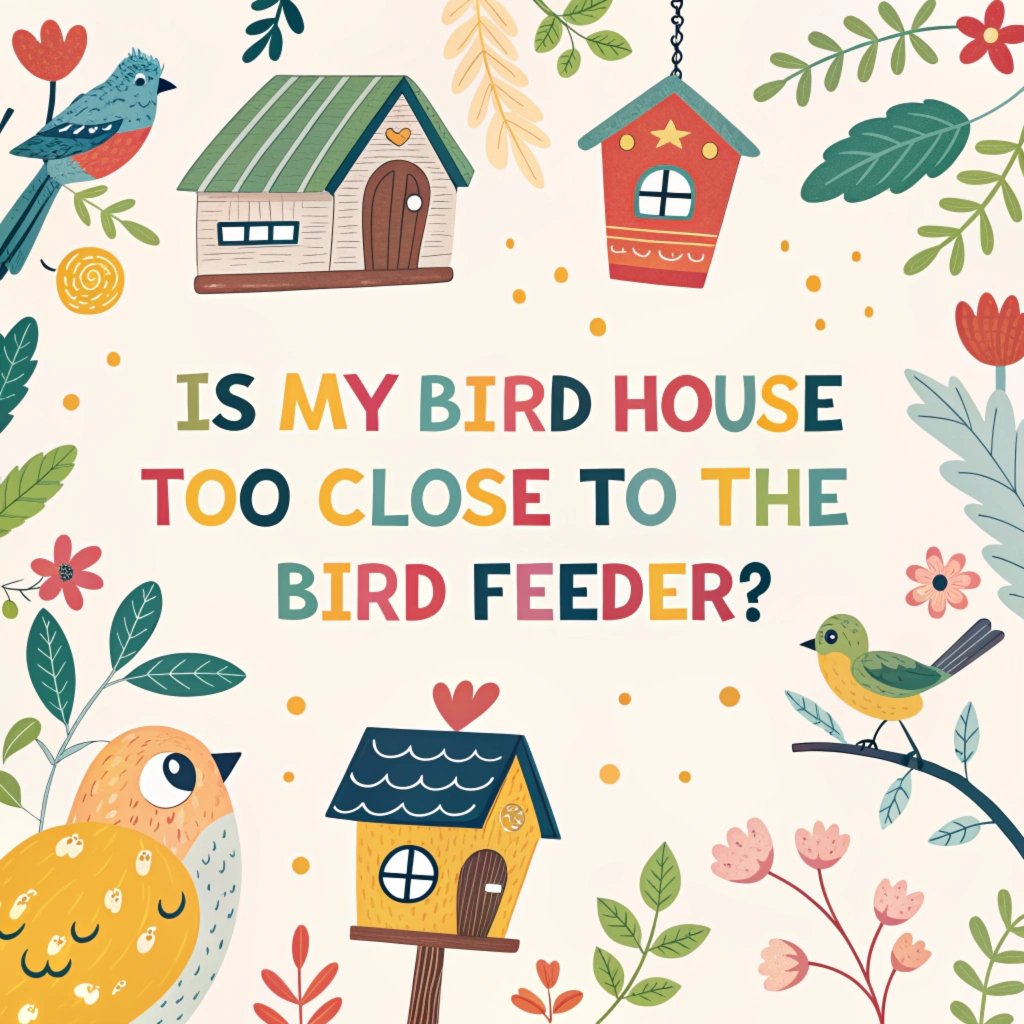
Key Takeaways
- Optimal Distance: Maintain a minimum of 10-15 feet between birdhouses and feeders, with 50 yards or more being ideal if space allows.
- Potential Issues: Close placement can lead to increased stress, predator attraction, and food contamination for nesting birds.
- Placement Factors: Consider height, direction, shelter, and predator protection when positioning birdhouses.
- Feeder Strategies: Place feeders in visible locations near natural cover, use multiple stations, and vary feeder types.
- Seasonal Adjustments: Adapt placement based on breeding seasons and winter conditions.
- Species-Specific Needs: Research and cater to the preferences of different bird species in your area.
- Environmental Considerations: Take into account your yard’s unique features and surrounding landscape.
- Regular Monitoring: Observe and adjust your setup to ensure it remains bird-friendly.
- Additional Features: Incorporate birdbaths, brush piles, and native plants to enhance your bird-friendly space.
- Cleaning Routine: Regularly clean birdhouses and feeders to prevent disease spread.
- Diverse Habitats: Create a variety of environments within your yard to attract different bird species.
- Natural Elements: Include native plants that provide food sources and nesting materials.
- Water Sources: Add a birdbath or fountain placed away from feeders and birdhouses.
- Vertical Space: Utilize different heights for birdhouses and feeders, especially in limited spaces.
- Nesting Materials: Provide nesting material holders to support birds during breeding season.
By following these key principles, you can create a thriving bird sanctuary that balances the needs of both nesting and feeding birds, ensuring a vibrant and diverse avian population in your yard.
Understanding the Importance of Proper Birdhouse and Feeder Placement
Proper placement of birdhouses and feeders is crucial for creating a harmonious environment for our feathered friends.
The distance between these two essential elements can significantly impact the birds’ behavior, nesting success, and overall well-being.
When birdhouses are placed too close to feeders, it can lead to various issues that may discourage birds from using the nesting sites or cause unnecessary stress.
Factors such as increased competition, predator attraction, and disturbance during nesting periods all come into play.
By understanding the optimal distance and arrangement of birdhouses and feeders, you can create a more inviting and safe space for birds in your yard.
This knowledge will help you attract a diverse range of species and provide them with the best possible conditions for feeding, nesting, and raising their young.
The Ideal Distance: How Far Apart Should Birdhouses and Feeders Be?
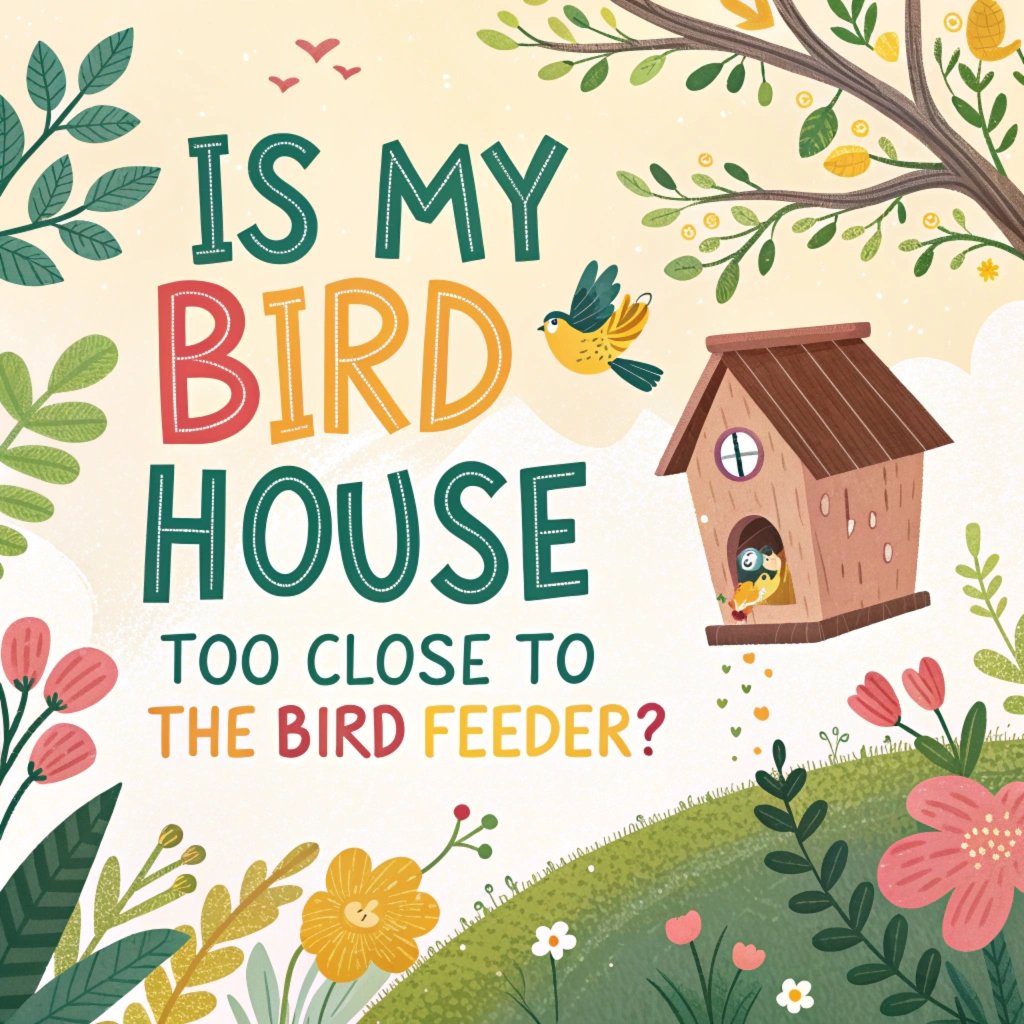
Experts generally recommend maintaining a minimum distance of 10 to 15 feet between birdhouses and feeders. However, if you have the space, it’s even better to place them further apart.
Some sources suggest a distance of 50 yards or more for optimal results. The reasoning behind this separation is multifaceted.
Firstly, it helps reduce competition and conflict between nesting birds and those visiting the feeders.
Secondly, it minimizes the risk of predators being attracted to the nesting sites due to the increased activity around feeders.
Additionally, this distance provides a buffer zone that allows nesting birds to have a quieter, more secluded area for raising their young.
When planning your yard layout, consider the flight paths between the birdhouse and natural food sources, ensuring there’s a clear and safe route for birds to travel.
Potential Problems with Closely Placed Birdhouses and Feeders
When birdhouses are situated too close to feeders, several issues can arise. One primary concern is the increased foot traffic and activity around the nesting area, which can stress nesting birds and potentially cause them to abandon their nests.
The constant commotion of birds coming and going from feeders may also attract predators, putting eggs and nestlings at risk. Another problem is the potential for food contamination.
Seeds and droppings from feeder birds can accumulate near the birdhouse, leading to unsanitary conditions and possibly introducing harmful bacteria or parasites to the nesting area.
Additionally, aggressive species that frequent feeders may intimidate or harass nesting birds, discouraging them from using the birdhouse altogether.
By maintaining an appropriate distance between birdhouses and feeders, you can mitigate these risks and create a more balanced environment for all birds in your yard.
Factors to Consider When Positioning Birdhouses
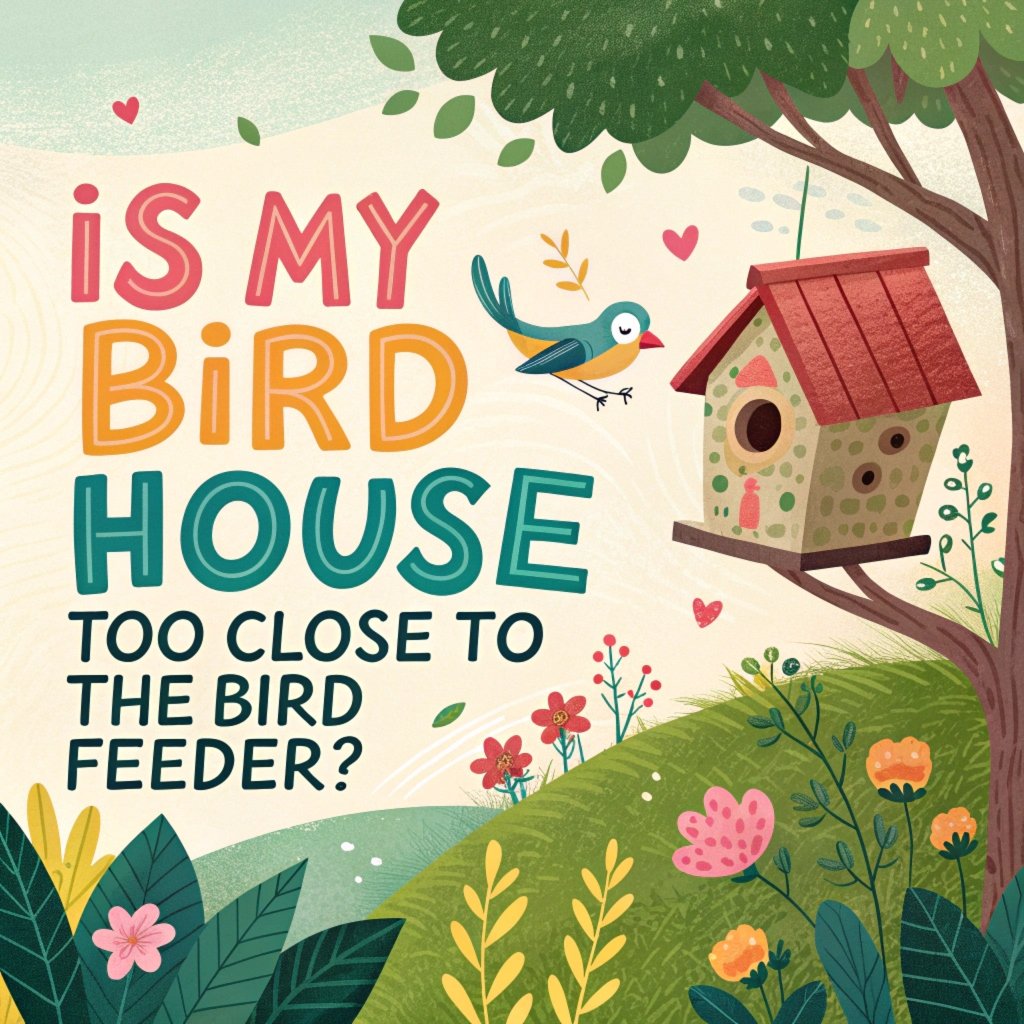
When deciding where to place your birdhouse, several factors should be taken into account beyond just the distance from feeders.
Height is crucial, with most birdhouses ideally positioned between 5 to 12 feet above the ground, depending on the species you’re trying to attract.
The direction the birdhouse faces is also important; generally, an eastward or southeastward orientation is preferred to provide warmth from the morning sun while protecting from harsh afternoon heat and prevailing winds.
Shelter is another key consideration. Positioning the birdhouse near natural cover like trees or shrubs offers protection and makes birds feel more secure.
However, ensure there’s a clear flight path to the entrance. Predator protection is vital, so avoid placing birdhouses near areas where cats or other predators can easily access them.
Lastly, consider the specific needs of the bird species you’re hoping to attract, as different birds have varying preferences for nesting sites.
Optimal Placement Strategies for Bird Feeders
When it comes to positioning bird feeders, several strategies can help create an ideal feeding environment while maintaining a safe distance from birdhouses.
Visibility is key; place feeders where birds can easily spot them, preferably near natural cover like trees or shrubs that provide quick escape routes.
However, ensure the feeder is not so close to dense foliage that it becomes an easy target for predators. Multiple feeding stations spread throughout your yard can help reduce competition and accommodate different species’ preferences.
Consider using different types of feeders (tube feeders, platform feeders, suet cages) to attract a variety of birds.
Height is also important; most feeders should be placed about 5 feet off the ground, but adjust based on the species you’re targeting.
Remember to position feeders away from windows to prevent bird collisions, and ensure they’re easily accessible for refilling and cleaning.
Creating a Bird-Friendly Yard: Balancing Feeders, Birdhouses, and Natural Elements
A truly bird-friendly yard goes beyond just properly placed birdhouses and feeders. It’s about creating a balanced ecosystem that provides for all aspects of bird life.
Incorporate a variety of native plants that offer natural food sources, nesting materials, and shelter.
Include a water source like a birdbath or small fountain, positioned away from both feeders and birdhouses to prevent contamination.
Create diverse habitats within your yard by varying the landscape with different levels of vegetation, from ground cover to shrubs to trees.
This diversity will attract a wider range of bird species. Consider leaving some areas of your yard a bit wild and untidy, as many birds prefer natural, less manicured spaces for foraging and nesting.
By thoughtfully arranging these elements and maintaining appropriate distances between birdhouses, feeders, and other features, you can create a harmonious environment that supports a thriving bird population.
The Role of Seasonal Changes in Birdhouse and Feeder Placement
Seasonal considerations play a significant role in the optimal placement of birdhouses and feeders.
During the breeding season (typically spring and early summer), it’s especially important to maintain a greater distance between nesting sites and feeding areas to minimize disturbance to nesting birds.
You might consider relocating some feeders further away from birdhouses during this time. In winter, when nesting isn’t a concern, you can be more flexible with feeder placement, potentially moving them closer to shelter to provide easy access for birds in harsh weather.
However, if you live in an area where some species nest year-round, maintain the recommended distance consistently.
Seasonal cleaning of both birdhouses and feeders is crucial. Clean out birdhouses after each brood has fledged and regularly clean feeders to prevent the spread of diseases.
By adapting your yard setup to the changing seasons, you can provide the best possible environment for birds throughout the year.
Species-Specific Considerations for Birdhouse and Feeder Placement
Different bird species have varying preferences for nesting sites and feeding habits, which should influence how you arrange birdhouses and feeders in your yard.
For example, bluebirds prefer open areas and may use birdhouses placed in fields or near the edge of wooded areas.
They benefit from feeders offering mealworms placed some distance away. Chickadees and wrens, on the other hand, are more adaptable and may use birdhouses in a variety of locations, including near backyard feeders offering seeds and suet.
Purple martins are colonial nesters and require special multi-compartment houses placed in open areas, well away from feeders.
Woodpeckers appreciate suet feeders and may nest in natural cavities or specially designed birdhouses, preferably not too close to busy feeding stations.
By researching the specific needs of the bird species in your area, you can tailor your birdhouse and feeder placement to create an inviting habitat for a diverse avian community.
The Impact of Surrounding Environment on Birdhouse and Feeder Placement
The surrounding environment plays a crucial role in determining the best placement for birdhouses and feeders. In urban or suburban settings, where space might be limited, you may need to be more creative in separating these elements.
Utilize vertical space by placing birdhouses higher and feeders lower, or vice versa. In more spacious rural environments, you have the luxury of greater separation.
Consider the natural features of your property, such as trees, shrubs, and open areas, and use these to create distinct zones for nesting and feeding.
The presence of nearby water sources, like streams or ponds, can also influence placement, as birds are attracted to areas with accessible water.
Be mindful of human activity in your yard; place birdhouses in quieter areas and feeders where they can be easily observed and maintained.
By taking into account the unique characteristics of your environment, you can create an optimal layout that benefits both birds and bird watchers.
Monitoring and Adjusting: Ensuring Your Setup is Bird-Friendly
Regular observation and willingness to make adjustments are key to ensuring your birdhouse and feeder setup remains bird-friendly.
Pay attention to which birds are using your feeders and birdhouses, and note any changes in behavior or population. If you notice that certain birdhouses are consistently unused, consider relocating them or modifying their design.
Similarly, if some feeders are overly crowded while others are ignored, adjust their placement or the type of food offered.
Watch for signs of predator activity or other disturbances and take appropriate action, such as installing baffles or relocating affected houses or feeders.
Keep an eye out for any signs of disease at your feeders and take immediate steps to clean and disinfect if necessary.
By staying attentive and responsive to the needs of your avian visitors, you can continually improve your yard’s appeal to a diverse range of bird species.
Additional Features to Enhance Your Bird-Friendly Space
To create a truly inviting environment for birds, consider incorporating additional features beyond just birdhouses and feeders.
Birdbaths are an excellent addition, providing a necessary water source for drinking and bathing.
Place birdbaths in a shaded area, away from both feeders and birdhouses to prevent contamination. Brush piles can offer shelter and foraging opportunities for ground-dwelling birds.
Native plants that produce berries, seeds, or attract insects can provide natural food sources and nesting materials.
Consider installing perches or small platforms near your birdhouses to give parent birds a place to land before entering the nest.
Nesting material holders filled with items like twine, hair, or small twigs can be a welcome resource during breeding season.
By diversifying the amenities in your yard, you create a more complete habitat that caters to various bird species and their different needs throughout the year.
FAQs
How close is too close for a birdhouse to a feeder?
Generally, a birdhouse should be at least 10-15 feet away from feeders. However, if space allows, a distance of 50 yards or more is even better to ensure minimal disturbance to nesting birds.
Can I put a bird feeder on the same pole as a birdhouse?
It’s not recommended to put a bird feeder on the same pole as a birdhouse. The activity around the feeder can disturb nesting birds and potentially attract predators to the nesting site.
How high should I place my birdhouse?
The ideal height for a birdhouse varies by species but generally ranges from 5 to 12 feet above the ground. Research the specific preferences of the bird species you’re hoping to attract.
Should birdhouses face a certain direction?
In general, birdhouses should face east or southeast to provide warmth from the morning sun while protecting from harsh afternoon heat and prevailing winds.
How often should I clean my birdhouse and feeder?
Birdhouses should be cleaned out after each brood has fledged. Feeders should be cleaned every two weeks, or more frequently during periods of heavy use or wet weather.

Hello, I’m Amelia White, the founder of birdsfanatic.com. As a lifelong bird enthusiast and spiritual seeker, I’ve always been fascinated by the mystical connections between birds and the human experience. On this site, I share my knowledge and insights into the symbolic meanings and spiritual significance of various bird species, exploring their roles in mythology, folklore, and cultural traditions. Join me on this journey into the world of birds, where we’ll discover the hidden wisdom and guidance that these magnificent creatures have to offer.

